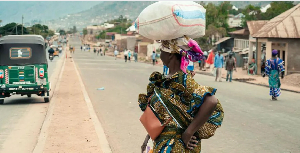to protect the economies of least developed and developing countries?
Essentially, the WTO is a place where member governments go, to try to sort out the trade problems they face with each other.
At its heart are the WTO agreements, negotiated and signed by the bulk of the world’s trading nations.
But the WTO is not just about liberalizing trade, and in some circumstances its rules support maintaining trade barriers — for example to protect consumers, prevent the spread of disease or protect the environment
The case for open trade
The economic case for an open trading system based on multilaterally agreed rules is simple enough and rests largely on commercial common sense. But it is also supported by evidence: the experience of world trade and economic growth since the Second World War. Tariffs on industrial products have fallen steeply and now average less than 5% in industrial countries. During the first 25 years after the war, world economic growth averaged about 5% per year, a high rate that was partly the result of lower trade barriers. World trade grew even faster, averaging about 8% during the period.
Anti-dumping, subsidies, safeguards: contingencies, etc
Binding tariffs, and applying them equally to all trading partners (most-favoured-nation treatment, or MFN) are key to the smooth flow of trade in goods. The WTO agreements uphold the principles, but they also allow exceptions — in some circumstances. Three of these issues are:
actions taken against dumping (selling at an unfairly low price)
subsidies and special “countervailing” duties to offset the subsidies
emergency measures to limit imports temporarily, designed to “safeguard” domestic industries.
Anti-dumping actions
If a company exports a product at a price lower than the price it normally charges on its own home market, it is said to be “dumping” the product. Is this unfair competition? Opinions differ, but many governments take action against dumping in order to defend their domestic industries. The WTO agreement does not pass judgement. Its focus is on how governments can or cannot react to dumping — it disciplines anti-dumping actions, and it is often called the “Anti-Dumping Agreement”. (This focus only on the reaction to dumping contrasts with the approach of the Subsidies and Countervailing Measures Agreement.)
The legal definitions are more precise, but broadly speaking the WTO agreement allows governments to act against dumping where there is genuine (“material”) injury to the competing domestic industry. In order to do that the government has to be able to show that dumping is taking place, calculate the extent of dumping (how much lower the export price is compared to the exporter’s home market price), and show that the dumping is causing injury or threatening to do so.
GATT (Article 6) allows countries to take action against dumping. The Anti-Dumping Agreement clarifies and expands Article 6, and the two operate together. They allow countries to act in a way that would normally break the GATT principles of binding a tariff and not discriminating between trading partners — typically anti-dumping action means charging extra import duty on the particular product from the particular exporting country in order to bring its price closer to the “normal value” or to remove the injury to domestic industry in the importing country.
There are many different ways of calculating whether a particular product is being dumped heavily or only lightly. The agreement narrows down the range of possible options. It provides three methods to calculate a product’s “normal value”. The main one is based on the price in the exporter’s domestic market. When this cannot be used, two alternatives are available — the price charged by the exporter in another country, or a calculation based on the combination of the exporter’s production costs, other expenses and normal profit margins. And the agreement also specifies how a fair comparison can be made between the export price and what would be a normal price.
Calculating the extent of dumping on a product is not enough. Anti-dumping measures can only be applied if the dumping is hurting the industry in the importing country. Therefore, a detailed investigation has to be conducted according to specified rules first. The investigation must evaluate all relevant economic factors that have a bearing on the state of the industry in question. If the investigation shows dumping is taking place and domestic industry is being hurt, the exporting company can undertake to raise its price to an agreed level in order to avoid anti-dumping import duty.
Detailed procedures are set out on how anti-dumping cases are to be initiated, how the investigations are to be conducted, and the conditions for ensuring that all interested parties are given an opportunity to present evidence. Anti-dumping measures must expire five years after the date of imposition, unless an investigation shows that ending the measure would lead to injury.
Anti-dumping investigations are to end immediately in cases where the authorities determine that the margin of dumping is insignificantly small (defined as less than 2% of the export price of the product). Other conditions are also set. For example, the investigations also have to end if the volume of dumped imports is negligible (i.e. if the volume from one country is less than 3% of total imports of that product — although investigations can proceed if several countries, each supplying less than 3% of the imports, together account for 7% or more of total imports).
The agreement says member countries must inform the Committee on Anti-Dumping Practices about all preliminary and final anti-dumping actions, promptly and in detail. They must also report on all investigations twice a year. When differences arise, members are encouraged to consult each other. They can also use the WTO’s dispute settlement procedure.
Some issues raised
The Uruguay Round (1986-94) saw a shift in North-South politics in the GATT-WTO system. Previously, developed and developing countries had tended to be in opposite groups, although even then there were exceptions. In the run up to the Uruguay Round, the line between the two became less rigid, and during the round different alliances developed, depending on the issues. The trend has continued since then.
In some issues, the divide still appears clear — in textiles and clothing, and some of the newer issues debated in the WTO, for example — and developing countries have organized themselves into alliances such as the African Group and the Least-Developed Countries Group.
In many others, the developing countries do not share common interests and may find themselves on opposite sides of a negotiation. A number of different coalitions among different groups of developing countries have emerged for this reason. The differences can be found in subjects of immense importance to developing countries, such as agriculture.
This is a summary of some of the points discussed in the WTO.
Participation in the system: opportunities and concerns
The WTO agreements, which were the outcome of the 1986-94 Uruguay Round of trade negotiations, provide numerous opportunities for developing countries to make gains. Further liberalization through the Doha Agenda negotiations aims to improve the opportunities.
Among the gains are export opportunities. They include:
fundamental reforms in agricultural trade
phasing out quotas on developing countries’ exports of textiles and clothing reductions in customs duties on industrial products
expanding the number of products whose customs duty rates are “bound” under the WTO, making the rates difficult to raise
phasing out bilateral agreements to restrict traded quantities of certain goods — these “grey area” measures (the so-called voluntary export restraints) are not really recognized under GATT-WTO.
In addition, liberalization under the WTO boosts global GDP and stimulates world demand for developing countries’ exports.
However, a number of problems remain. Developing countries have placed on the Doha Agenda a number of problems they face in implementing the present agreements.
And they complain that they still face exceptionally high tariffs on selected products (“tariff peaks”) in important markets that continue to obstruct their important exports. Examples include tariff peaks on textiles, clothing, and fish and fish products. In the Uruguay Round, on average, industrial countries made slightly smaller reductions in their tariffs on products which are mainly exported by developing countries (37%), than on imports from all countries (40%). At the same time, the potential for developing countries to trade with each other is also hampered by the fact that the highest tariffs are sometimes in developing countries themselves. But the increased proportion of trade covered by “bindings” (committed ceilings that are difficult to remove) has added security to developing country exports.
A related issue is “tariff escalation”, where an importing country protects its processing or manufacturing industry by setting lower duties on imports of raw materials and components, and higher duties on finished products. The situation is improving. Tariff escalation remains after the Uruguay Round, but it is less severe, with a number of developed countries eliminating escalation on selected products. Now, the Doha agenda includes special attention to be paid to tariff peaks and escalation so that they can be substantially reduced.
Erosion of preferences
An issue that worries developing countries is the erosion of preferences — special tariff concessions granted by developed countries on imports from certain developing countries become less meaningful if the normal tariff rates are cut because the difference between the normal and preferential rates is reduced.
Just how valuable these preferences are is a matter of debate. Unlike regular WTO tariff commitments, they are not “bound” under WTO agreements and therefore they can be changed easily. They are often given unilaterally, at the initiative of the importing country. This makes trade under preferential rates less predictable than under regular bound rates which cannot be increased easily. Ultimately countries stand to gain more from regular bound tariff rates.
But some countries and some companies have benefited from preferences. The gains vary from product to product, and they also depend on whether producers can use the opportunity to adjust so that they remain competitive after the preferences have been withdrawn.
The ability to adapt: the supply-side
Can developing countries benefit from the changes? Yes, but only if their economies are capable of responding. This depends on a combination of actions: from improving policy-making and macroeconomic management, to boosting training and investment. The least-developed countries are worst placed to make the adjustments because of lack of human and physical capital, poorly developed infrastructures, institutions that don’t function very well, and in some cases, political instability.
In conclusion, it is very clear that preventing or avoiding dumping of goods from the developed world to the developing and least developed world is not as simple as perceived by many people, especially in view of the fact that the burden of proof lies on the affected country and that there are no clear cut rules to determine the fact or otherwise. This leaves the least developed and the developing world at the mercy of the developed world when it comes to fighting antidumping to protect one’s own economy.
In my next article, I will explain why China’s accelerating presence in Ghana is a real threat to the economy and really needs to be re-re-examined
Amofa Baffoe,
Software Quality Analyst,
Galway, Republic of Ireland
Business News of Friday, 23 December 2011
Source: Amofa Baffoe,












